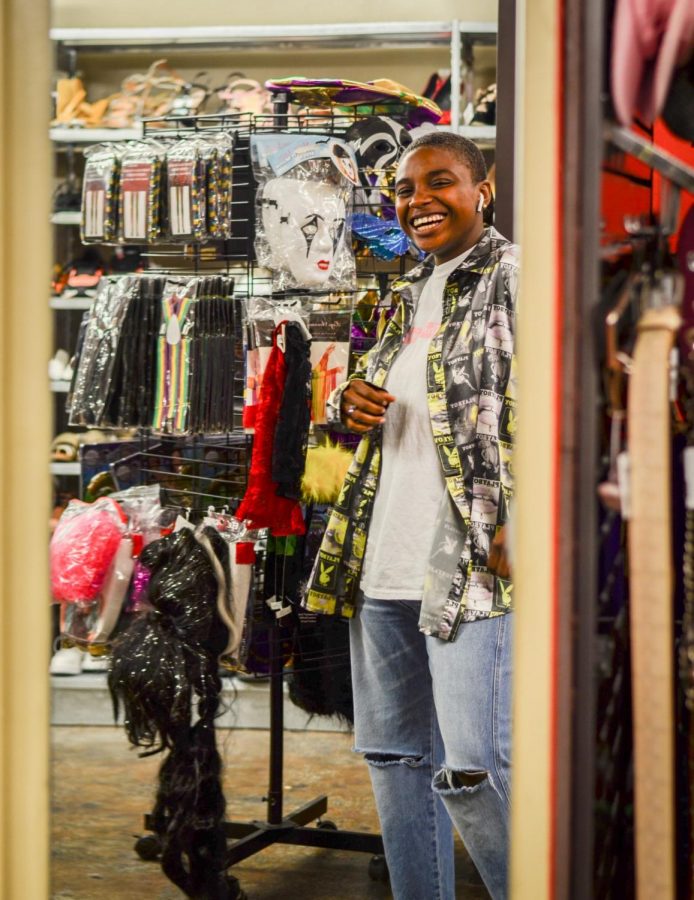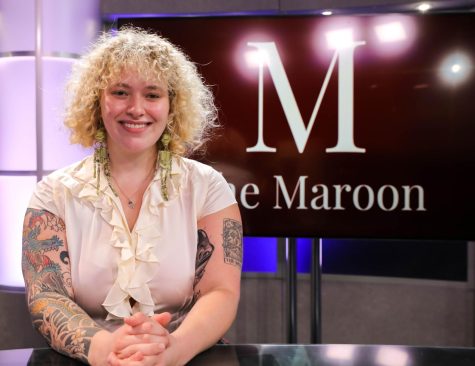Students shop sustainably in fashion for the future
Philosophy Freshman Jeovanna deShong-Conner looks in the mirror at New Orleans Buffalo Exchange, wearing thrifted clothes.
January 31, 2020
With consumers’ growing efforts to confront issues regarding the environment and poor working conditions, the fashion industry faces significant demands for changes in policy and means of production.
According to the Associated Press, there has been a significant push toward sustainability as younger consumers have been more focused on eco-friendly and ethical fashion practices.
Mass communication freshman Gina Nedwick, adopted sustainable fashion practices to avoid overconsumption, she said.
“I have bought stuff that I have never even worn, and I wanted to move away from that mentality,”Nedwick said. “I don’t want to just over consume and buy new things.”
The textile industry has been reported to be one of the most polluting industries in the world with nearly 60% of apparel items ending up in a landfill within the same year they were purchased.
For this reason, psychology and criminology sophomore Chiara Proccaccio became interested in sustainable shopping along with its ethicality.
“What really triggered my interest in sustainable shopping was the fact that the fast fashion world is not only killing the environment, but it is also extremely detrimental to those who labor within it,” Proccaccio said.
Sustainability-focused fashion company Reformation is a prototype of what Proccaccio looks for in a fashion company.
The San Francisco-based company has made progress in the sustainable market by investing in green building infrastructure to minimize its waste, water and energy footprints. Reformation has also invested in its workers and their working conditions by providing on-the-job training and opportunities for growth, according to the company’s website.
In addition to companies like Reformation, second hand clothing stores such as New Orleans Buffalo Exchange make up a good deal of the sustainable fashion market.
Store manager at the New Orleans Buffalo Exchange Denise Lyons said she noticed an increase in interest in her store in recent years.
“I think your generation is super into secondhand, reusing and embracing the trends of my youth, and so, it seems to bring those styles back,” Lyons said.
Lyons also said there has been an increase of people that sell clothes to the store “that are in the business of selling clothes.”
“People are really into reselling on Instagram or reselling on social media sites, and it’s certainly affected the amount and quality of merchandise that’s coming in,” she said.
With an increased consumer focus, secondhand clothing is at the forefront of today’s modern market having grown 21 times faster than the retail market over the past three years. By 2028, second hand fashion is expected to reach $64 billion, nearly 1.5 times the size of fast fashion, according to retail analytics firm GlobalData.
Mass communication freshman Cerena “Spooky” McBride said she is excited about people’s growing interest in her common rite of passage.
“I love taking people who don’t thrift to thrift shops because I want them to see, and I love finding things for them,” McBride said.
McBride said that a successful thrift trip requires shoppers to be open minded and spontaneous for it to be considered a successful run.
“You can’t walk into Goodwill expecting to find the exact same thing that’s in your head because you are never going to find it,” McBride said.
“There’s this element of design and having an eye for turning something into something else,” when it comes to thrifting,” Nedwick said.
With the recent demand in secondhand shopping, Lyons has been busy finding clothing pieces that will appeal to a wide audience of thrift shoppers.
“We are trying to cultivate an inventory that is going to be good for people that want things new, but we are also trying to get unique and one-of-a-kind and really eccentric things,” Lyons said.
The Associated Press contributed to this report.







